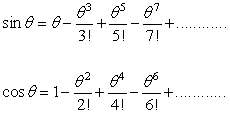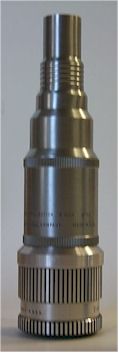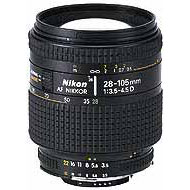
Corinne Lee # 45672003
Trinh Le # 43474980
The study of the lens system in the fullest detail is an extremely difficult and complex
in the past and maybe even now. Therefore, it was necessary to use linear approximation
, first order,i.e looking at the first term of the sine and cosine function, to find
equations for image formation. It assumes that the angle that exist
between the optical axis and the rays are small.
Sine and Cosine Function:

First Order/ Linear Approximation:
![]()

This is consider one of the "ideal len" assumption. Since we look only at the first term in
the sine and cosine function, we have eliminated the problem cause by the third order, fifth order
and other orders of the sine and cosine function. Problems cause by the third order are known as
the third order aberration such as spherical aberration, coma, astigmatism, curvature of field,
and distortion. Additional aberration, chromatic aberration, results from the wavelength dependence
of an optical system.
Spherical Aberration:
Definition:
-> Spherical Aberration is cause when rays from different y-distance do not converge at the same focal point.

Chromatic Aberration:
Definition:
-> Chromatic Aberration occurs when the index of refraction varies with wavelength due to dispersion.

->The image is less magnified at the center than at its edges

->The image is more magnification at the center than at ites edges.

Maker: Bell & Howell Name of Lens: Filmovara Focus: 15-25mm Field Covered: 8 mm proj.
 This is an example of a
Filmovara 16mm projection lense.
This is an example of a
Filmovara 16mm projection lense.
Maker:Minolta Name of Lens: Rokkor Focus: 80-160mm Field Covered: 24X26 mm
 This is an example of
a Rikkor 28-105 mm.
This is an example of
a Rikkor 28-105 mm.
Notes
All images in these webpage are created by Trinh Le and Corinne Lee with Postscript, Paint, MathType, Canvas
and Photshop. Please do not use without permission. To look at how we created these items, just move your mouse
over the image. If it says it is created by Postscript, click the image and a new page with source code will be open.
Thank You.